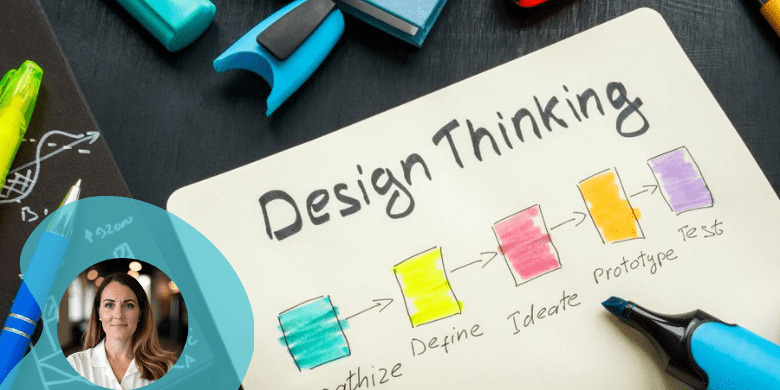In the early days of email marketing, success was measured by simple metrics: Did the message get delivered, and did anyone open it? Fast-forward to today, and marketers are navigating an entirely different landscape — one where the average professional receives over 120 emails per day, and consumers are great at filtering out noise in milliseconds.
The evolution of AI in marketing has fundamentally transformed how we approach this challenge. What began as basic segmentation and scheduled send-time optimization has matured into sophisticated systems that can predict customer behavior, generate personalized content at scale and continuously learn from engagement patterns. Yet even as AI has revolutionized personalization, there’s a critical element that determines whether that perfectly timed, highly relevant email actually gets opened and read: design.
The Intersection of AI and Human Psychology
Here’s where the marriage of technology and psychology becomes fascinating. AI excels at determining what to say and when to say it, but the how, the visual presentation, taps into the human psyche that can make or break campaign performance. New research from Bloomreach reveals that specific design elements can measurably impact open rates, click-throughs and ultimately, revenue.
When we surveyed consumers about which emojis in subject lines would make them most likely to engage with a brand’s email, and which would inspire them to make purchases, the gift emoji emerged as the clear winner. The runner-ups tell an equally compelling story: the price tag, money bag, target and lightning flash emojis all tap into specific psychological triggers.
These aren’t random preferences. The gift emoji creates immediate associations with value, surprise and reward. The price tag and money bag signal deals and savings. The target suggests precision and relevance. The lightning flash conveys urgency and a limited-time opportunity. Each emoji serves as a visual shorthand that communicates intent before the email is even opened.
Color psychology plays an equally crucial role. When we asked consumers which color would make them most likely to engage with shopping ads, blue emerged as the clear winner. This isn’t surprising from a psychological standpoint. Blue builds trust and credibility, reduces anxiety around purchase decisions and creates a sense of reliability that’s particularly important for transactional emails or first-time customer outreach.
From Guesswork to Science
The transformation of email marketing mirrors the broader evolution of AI in the marketing stack: 10 years ago, we were celebrating the ability to insert a first name into an email. Five years ago, AI-powered recommendation engines began suggesting products based on browsing history. Today, we’re using machine learning models that can predict not just what products a customer might want, but what design elements will resonate with their individual preferences and behavioral patterns.
This sophistication matters more than ever during peak shopping periods like Black Friday and Cyber Monday. When every retailer is flooding inboxes during the holiday season, personalization ensures your message is relevant, but design determines whether it’s noticed.
A Blueprint for High-Performance Email Design
The practical application of these insights doesn’t require a degree in psychology or data science. Here’s what our analysis of successful personalized campaigns reveals:
Visual hierarchy matters more than ever: With attention spans measured in seconds, your email must communicate value immediately. Use white space strategically, employ size and weight to guide the eye to your primary message and ensure your most important call-to-action is unmistakable.
Emojis are data-driven decisions, not decorative choices: Test them systematically. The gift emoji performs well for promotions, but sparkles can increase opens for lifestyle brands, while alert symbols boost urgency for limited-time offers. AI can help identify which emojis resonate with specific audience segments.
Color should reinforce your message’s intent: Trust-building emails benefit from blues and purples. Urgency-driven messages leverage warm colors like red and orange. Sale announcements can embrace bold, high-contrast palettes. Let your campaign objective guide your color strategy.
Consistency builds recognition and trust: While testing variations is essential, maintaining consistent brand elements — your logo, signature colors, signature tone and email structure — creates familiarity that increases open rates over time. AI can optimize within your brand guidelines, not replace them.
The Future: Hyperpersonalized Design at Scale
AI provides the intelligence and scale, but human psychology and creative direction provide the blueprint. The most effective email marketing strategies will always balance data-driven personalization with design elements that trigger emotional responses, build trust and create perceived value.
In today’s crowded inbox, being relevant is the baseline. Standing out, resonating and converting requires understanding that every design choice is a strategic decision backed by behavioral science. When you combine the targeting precision of AI with visual elements grounded in psychology, you create emails that don’t just reach customers, they move them to action.
The retailers that will win the attention economy aren’t just those with the best AI or the most creative designers. They’re the ones that understand that in the millisecond between seeing an email notification and deciding whether to open it, design isn’t decoration, it’s differentiation.
Amanda Cole is Chief Marketing Officer at Bloomreach, leading the execution of the company’s marketing strategy to drive further business demand and brand awareness. She is a passionate marketing professional with more than 15 years of experience in helping SaaS companies build impactful brands, communicate differentiated value and grow high-performing marketing teams. Cole previously served as the Company’s SVP of Global Marketing, having joined in January 2021 through the acquisition of Exponea. Prior to joining Exponea, Cole served as VP, Demand Generation at Blueshift, a Customer Data Platform, and before that served as VP of Marketing, Americas and Global Programs at Basware, a financial software company.




